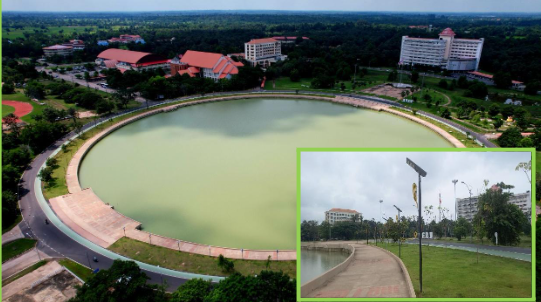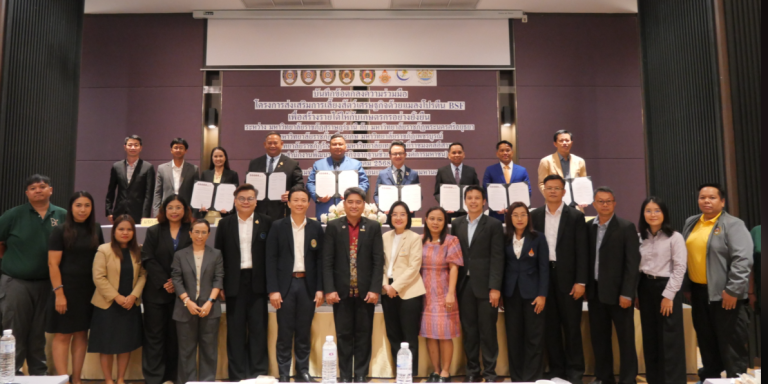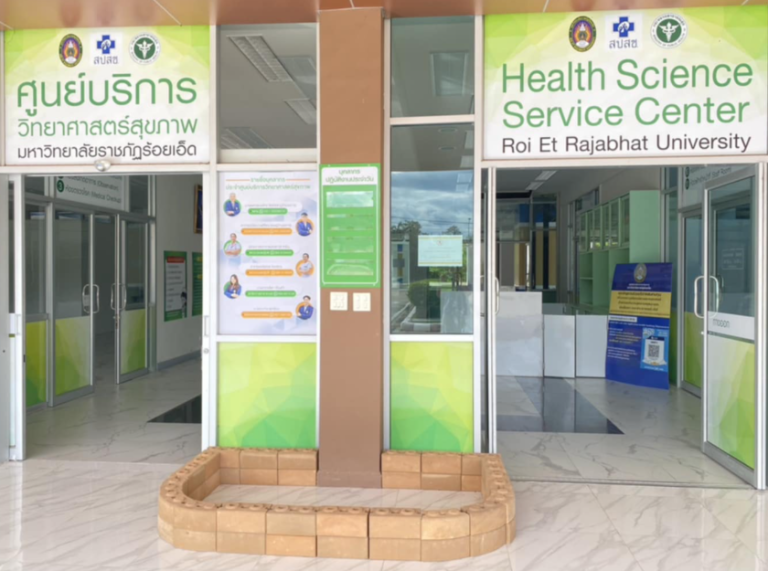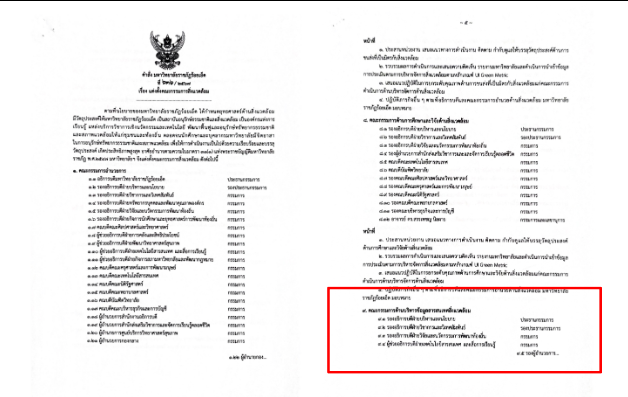Roi Et Rajabhat University focuses on using LED lighting, which has numerous advantages, especially in terms of energy efficiency and environmental friendliness. The benefits can be summarized as follows:
Energy Savings: LED lights consume significantly less energy than incandescent or fluorescent bulbs, achieving up to 80–90% energy savings compared to traditional incandescent bulbs.
Long Lifespan: LED lights have a longer lifespan than other types of bulbs, typically lasting between 25,000–50,000 hours on average, reducing the frequency of replacements.
Reduced Heat Output: LED lights emit very little heat, keeping rooms cooler and lessening the load on air conditioning systems.
Environmentally Friendly: LED lights are mercury–free and recyclable, helping to reduce pollution and increase eco–friendliness.
High Lighting Efficiency: LED lights offer better and more consistent illumination compared to other types of bulbs, providing even light distribution without flickering.
Switching to LED lighting is therefore a cost–effective and beneficial choice that promotes energy conservation, reduces long–term expenses, and contributes to environmental preservation.
A meeting room is a space designed for people to gather and conduct various activities such as meetings, presentations, seminars, or workshops. A well-designed meeting room should include the following elements:
Appropriate Lighting System: Adequate and consistent lighting should be installed. LED lights are an excellent choice as they provide bright, clear light and are energy-efficient.
Using LED lighting in classrooms offers several benefits, particularly in terms of energy efficiency and creating a conducive learning environment. The advantages of using LED lights in classrooms include:
Energy Efficiency: LED lights consume less energy than fluorescent or incandescent lights, which helps reduce electricity costs and benefits the environment.
Clear and Consistent Lighting: LED lighting provides well-distributed, comfortable light that reduces glare and is easy on the eyes, allowing students to see clearly and reducing eye strain.
Long Lifespan: LED lights last longer than other types of bulbs, minimizing the need for frequent replacements and lowering maintenance costs.
Reduced Heat Emission: LED lights emit less heat than other types of bulbs, keeping the classroom cooler, reducing the load on air conditioning, and providing a more comfortable learning atmosphere.
Environmentally Friendly: LED lights are mercury-free and recyclable, reducing toxic waste and having a positive impact on the environment.
Using LED lighting in classrooms is therefore a cost-effective choice that helps create an optimal learning environment.
Rajabhat Roi Et University has implemented the installation of LED street lights throughout the university campus to create a safe and comfortable environment for students and personnel. The details are as follows:
Energy Savings: The use of LED bulbs significantly reduces electricity consumption compared to traditional bulbs like fluorescent lights, allowing the university to lower electricity costs.
Better Brightness: LED bulbs provide higher brightness and better light quality, enhancing visibility at night and ensuring safety while reducing the risk of accidents.
Long Lifespan: LED bulbs have a long lifespan of up to 25,000 hours or more, decreasing the frequency of bulb replacements and maintenance costs.
Reduced Heat Production: LED bulbs produce less heat compared to other types of bulbs, minimizing the risk of fire hazards or injuries from contact.
Environmentally Friendly: The use of LED bulbs helps reduce greenhouse gas emissions and contains no harmful substances like mercury, which is beneficial for health and the environment.
Increased Safety: With adequate brightness, users of the university campus feel more secure during nighttime, especially in areas with frequent foot traffic.
Choosing to use LED street lights at Rajabhat Roi Et University not only improves the lighting system but also promotes sustainable energy use and supports safety in learning and working environments effectively.
Rajabhat Roi Et University can choose energy-efficient air conditioners rated 5 according to the following guidelines to optimize energy usage and environmental care:
Select the appropriate BTU size: Consider the BTU size based on the room or area, such as classrooms, meeting rooms, or offices. BTU should match the room size to achieve effective cooling without overworking the unit.
Look for the Energy Label 5: Check for the Energy Label 5 certification from EGAT (Electricity Generating Authority of Thailand) to ensure that the air conditioner is energy-efficient, reducing electricity consumption and helping the environment.
Choose an Inverter Type: Inverter air conditioners adjust compressor activity according to the desired temperature, saving more energy than standard air conditioners, and are suitable for long-term use.
Check the SEER (Seasonal Energy Efficiency Ratio): Select a unit with a high SEER value for optimal energy efficiency.
Additional Features: Consider air purification systems or filters that can eliminate dust and bacteria, such as PM 2.5, to promote user health.
After-Sales Service: Choose a brand with reliable after-sales service, such as maintenance and warranty, to ensure continued care for the air conditioner.
Opt for Environmentally Friendly Refrigerant: Use R32 refrigerant, which has a lower impact on global warming and is more eco-friendly than other refrigerants like R410A.
Example:
| Appliance | Total Number | Total number energy Efficient appliances | Percentage |
| LED Lamp | 13,127 | 12,472 | 90% |
| Air conditioner | 1,266 | 1,227 | 90% |
| … | … | … | |
| Average Percentage | 90% |




